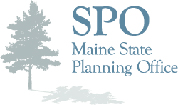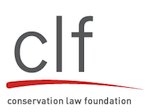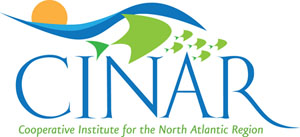Commentary
“Call me Ishmael. Some years ago - never mind how long precisely – having little or no money in my purse, and nothing particular to interest me on shore, I thought I would sail about a little and see the watery part of the world.” — Moby Dick, by Herman Melville
Ishmael, like educators and youth from communities along the Merrimack River under the aegis of the Gulf of Maine Institute (GOMI), traveled a journey of watery discovery.
GOMI will launch a new initiative this summer with the program Up, Down and Under, a regional look at the Merrimack River watershed. In partnership with the US Fish and Wildlife Service’s Parker River Refuge, four teams have met during the past year to develop this program. Each team will take the lead on one initiative and involve the other teams in investigating each other’s sites. Sharing of expertise and expanding study areas is expected to give all four teams a watershed-wide view of each problem and an understanding of the health of the watershed from a regional perspective.
GOMI/UDU students practicing video interviewing with John Halloran, GOMI Science Director.
Beginning at the confluence of the Winnipesaukee and Pemigewasset Rivers in the New Hampshire White Mountains town of Franklin, the Merrimack flows down through woods and farmlands, fresh water wetlands, then diverts into canals and spills over dams as it passes through New Hampshire’s capital, Concord, and the once-thriving mill towns of Lowell, Lawrence and Haverhill, Massachusetts. It continues through the city of Newburyport, salt marshes and estuaries before emptying into the Gulf of Maine. Unlike Ishmael’s this is a journey not only of observation and commentary but one of restoration.
The restoration aim is to help return and sustain this historic and important river and watershed as a crucial and viable ecological, economic and recreational resource since the health of the entire human and natural ecosystem is interdependent and reliant on clean toxin-free water.
An oft-quoted nostrum from Tip O’Neill, former Speaker of the U.S. House of Representatives, “All politics is local,” can be adapted to say “all stewardship is local.” Rethinking and retro-fitting to the times the earlier notion of “the commons,” whereby land water and resources are collectively shared properties, allows us to enter into a dialogue on usage and engage communities in stewardship of their resources.
Even before the current oil disaster in the Gulf of Mexico, to many it had become clear that resources such as rivers, oceans and mountains — the sources of clean air and water, food and shelter—cannot be trusted to the control of private interests. Beyond survival needs are the common interests of economics, aesthetics and recreation. To facilitate a citizenry able to promote a just, fair and sustainable stewardship of the commons requires proper education. John Dewey, in his 1966 book “Educating for Democracy,” writes about the importance of experiencing learning and the need for education to be “…in close interaction with other modes of associated experience beyond the school walls…”
GOMI Pearl Emmons, Tufts media Center presenting on flip camera use to UDU students and faculty. Along side her is workshop participant Sheila King, science teacher from Newburyport High School.
Education now needs be an interconnected system of community and school where future generations learn to be good citizens and stewards. The current general practice of a fragmented activity conducted by isolating the learner from the social, political and environmental components of community is no longer viable. This approach leads to what Richard Louv refers to in his seminal work, Last Child in the Woods, as ‘nature deficit disorder,’ and retards the cognitive, social and moral development of children as well as their capacities to respect, understand and steward the natural world.
It is no longer acceptable for youth not to know how or why to steward the world they will inherit. Youth need to learn to be citizen stewards, i.e., citizens who combine scientific knowledge and methodologies to study, understand and propose solutions to local problems, with the requisite civic engagement skills needed to get things done.
Our journey through the Merrimack River watershed is an effort to bring local resources together to perform exactly the service discussed above. We named our project Up, Down and Under, UDU for short, because we are working to understand and promote a healthy watershed from headwaters to estuaries. In doing so we are working with youth and both formal (in-school) and informal (out of school) educators.
Our partners include Tufts University (Medford, Mass.) U.S. Fish and Wildlife Service, Parker River Refuge, Newburyport, Mass.; Massachusetts Audubon; Drumlin Farms; Oceanswide, a Maine-based nonprofit using remotely operated submersible vehicles (ROVs) as a tools to understand ocean science; PlusTime NH and the public schools of Newburyport, Haverhill and Concord, Mass., and Concord and Laconia, NH. Current teams of youth and their adult mentors are from Newburyport, Haverhill and Concord, Mass., and Concord and Laconia, NH. UDU is directed by a Guide Team composed of representatives form each the partner organizations. As our work progresses new teams will be added.
The UDU teams will be joining the GOMI residential summer workshop this summer in Cornwallis, Nova Scotia. While there, they will develop a plan to implement a fall joint project.
The Concord, NH, and Newburyport teams are already collaborating on water quality and related issues. The summer workshop plan, however, will bring all four teams into a joint effort requiring collaboration in identifying, investigating, and acting on a watershed issue affecting all four communities. As to how teams can operate individually and collaborate with watershed perspective, consider the following.
The Newburyport Team, GOMI’s longest existing team, is involved in two main project areas: water testing for pharmaceutical products, particularly estrogen, and monitoring and removing the invasive plant species perennial, pepperweed. The Concord, NH, team has been engaged in water testing and composting. As the seasoned teams, Newburyport and Concord will mentor developing Haverhill, Concord, Mass., and Laconia teams. This fall the four teams will begin implementation of an extended project within the watershed that will yield useful and important data for all communities.
GOMI Phil Gay, Director of Tufts Media Center presenting on videography at a GOMI/ UDU workshop.
Thanks to a grant from the Newburyport Five Savings Bank, the Newburyport team has acquired professional quality water testing equipment which will allow them to collect and analyze data like working practitioners in the field. In partnership with the Merrimack River Watershed Council, they will take on the responsibility of monitoring several sites on the lower main stem of the river. Many of the sub watersheds have active associations monitoring these tributaries, but the main river has not had a consistent monitoring program for some time. The last scientific study was in 1965 prior to the passage of the Clean Water Act, which helped the river recover from decades of industrial abuse.
“It is critical to connect the sometimes seemingly insignificant local projects our team work hard to develop and implement to a larger regional scale so youth (and their surrounding community of adults) understand the importance of each small act on large issues,” said Deandra Perruccio, a participant from PlusTime New Hampshire and Concord’s Green Team. “ Up, Down, Under highlights the interconnectedness of each ecosystem and so points to the importance of coordinated solutions across communities to solve environmental problems.”
While at the summer workshop, teams will develop the capacities to video record and edit their work with the help of the Tufts Education Department Media Center. Aided by a grant from the Parker River U.S. Fish and Wildlife Refuge, teams will be provided with video cameras and gear. When they return home and implement their projects an on-going video record will be kept and placed in the GOMI/Tufts website Stewardship Toolbox as resource material for educators and youth who may wish to do similar projects in their communities. The toolbox will use state-of-the-art interactive Web 2.0 technology, including an online community, social networking, and blogs, and it will provide an educator’s digital toolbox and distance learning courses developed in conjunction with Tufts.
Since whatever happens upstream eventually happens downstream, this project will allow youthful river keepers the opportunity to collect long term data on water quality at the mouth of the river, compare it with the last exhaustive study and also monitor the various parameters from one section of the watershed to another. This equipment and the ability to collect data, will allow teams to identify “hot spots” in conjunction with other agencies and perhaps locate specific ‘inputs’ to the water that cause readings of concern.
While much lies ahead for UDU, much has been accomplished in the form of developing networks, projects and capacities to launch us into the next phase.
John Terry is GOMI’s President and John Halloran is GOMI’s Science Director.
Print





















